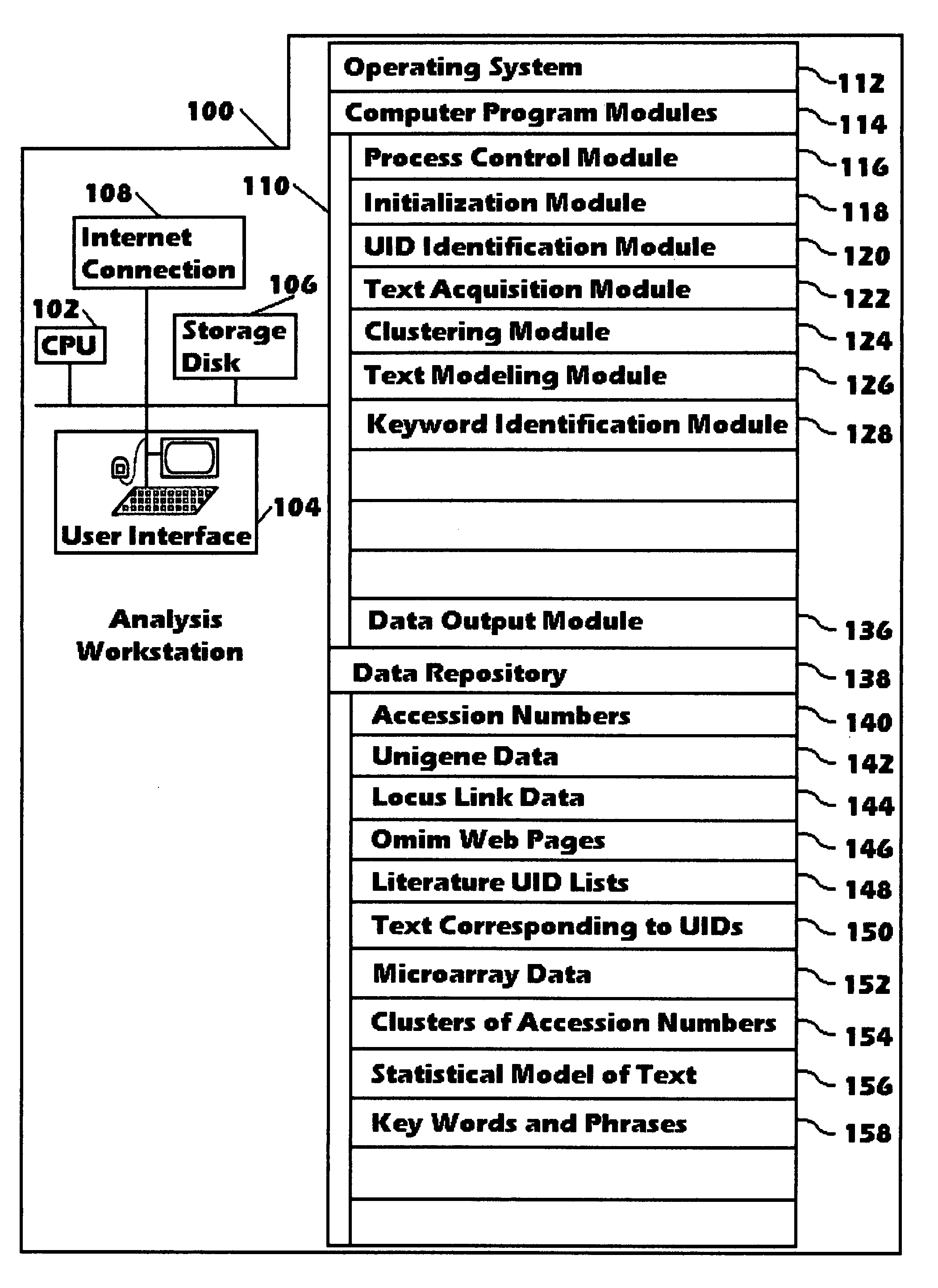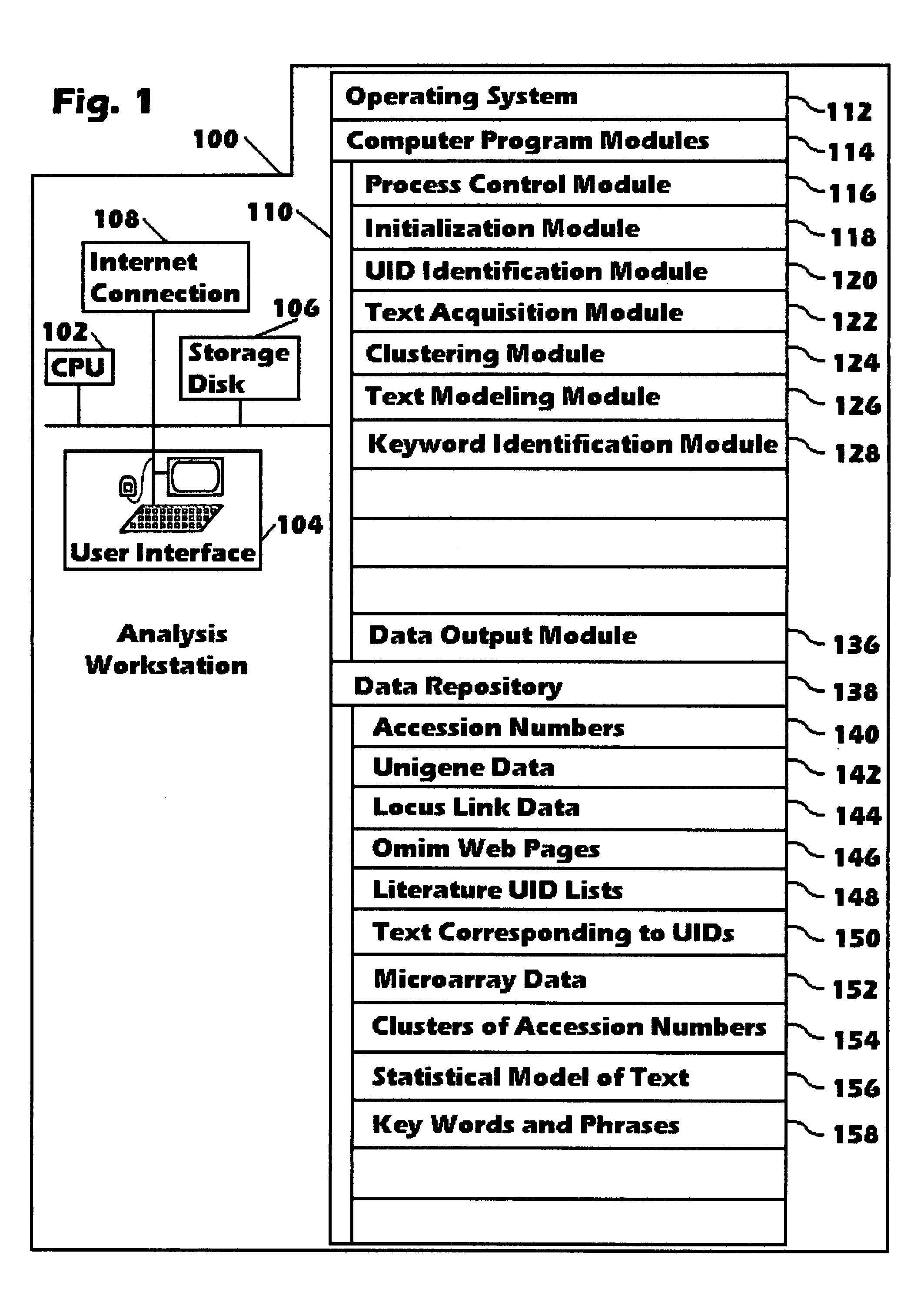System, methods, and computer program product for analyzing microarray data
a microarray and computer program technology, applied in the field of bioinformatics, can solve the problems of little prior art that can assist investigators in evaluating, unavailability or incompleteness of factual databases, and goodness-of-fit comparisons that do not assess the quality of clustering in terms of biological reasonableness
- Summary
- Abstract
- Description
- Claims
- Application Information
AI Technical Summary
Benefits of technology
Problems solved by technology
Method used
Image
Examples
Embodiment Construction
[0028]The present invention is not limited to any particular hardware or operating system environment. Those skilled in the art will understand that the systems and methods may be implemented using a variety of computer platforms, operating systems, and programming languages. Therefore, the following description of specific embodiments of the present invention is for purposes of illustration only.
Hardware
[0029]The device for analyzing microarray data is shown in FIG. 1. It consists of a computer workstation (100), which has Pentium III central processor unit, abbreviated as CPU (102), and which is connected to the Internet using a cable modem and a 10 / 100 network interface card (108). The workstation's User Interface (104) makes use of a monitor, keyboard, and mouse. The workstation's operating system, computer program modules, and data repository are loaded into a 512 Megabyte computer memory (110) from files on a 34 Gigabyte hard storage disk (106).
[0030]The operat...
PUM
 Login to View More
Login to View More Abstract
Description
Claims
Application Information
 Login to View More
Login to View More - R&D
- Intellectual Property
- Life Sciences
- Materials
- Tech Scout
- Unparalleled Data Quality
- Higher Quality Content
- 60% Fewer Hallucinations
Browse by: Latest US Patents, China's latest patents, Technical Efficacy Thesaurus, Application Domain, Technology Topic, Popular Technical Reports.
© 2025 PatSnap. All rights reserved.Legal|Privacy policy|Modern Slavery Act Transparency Statement|Sitemap|About US| Contact US: help@patsnap.com


